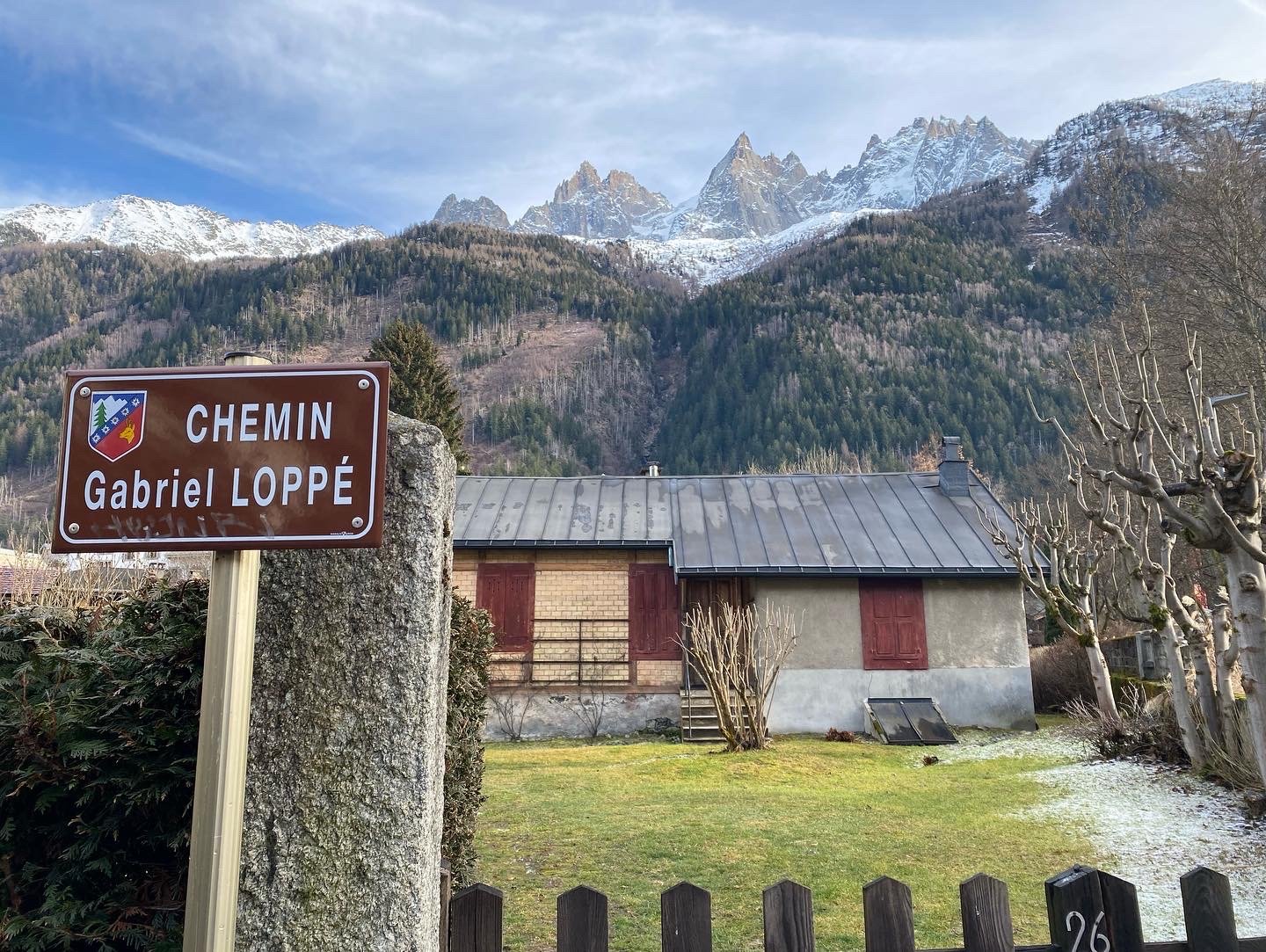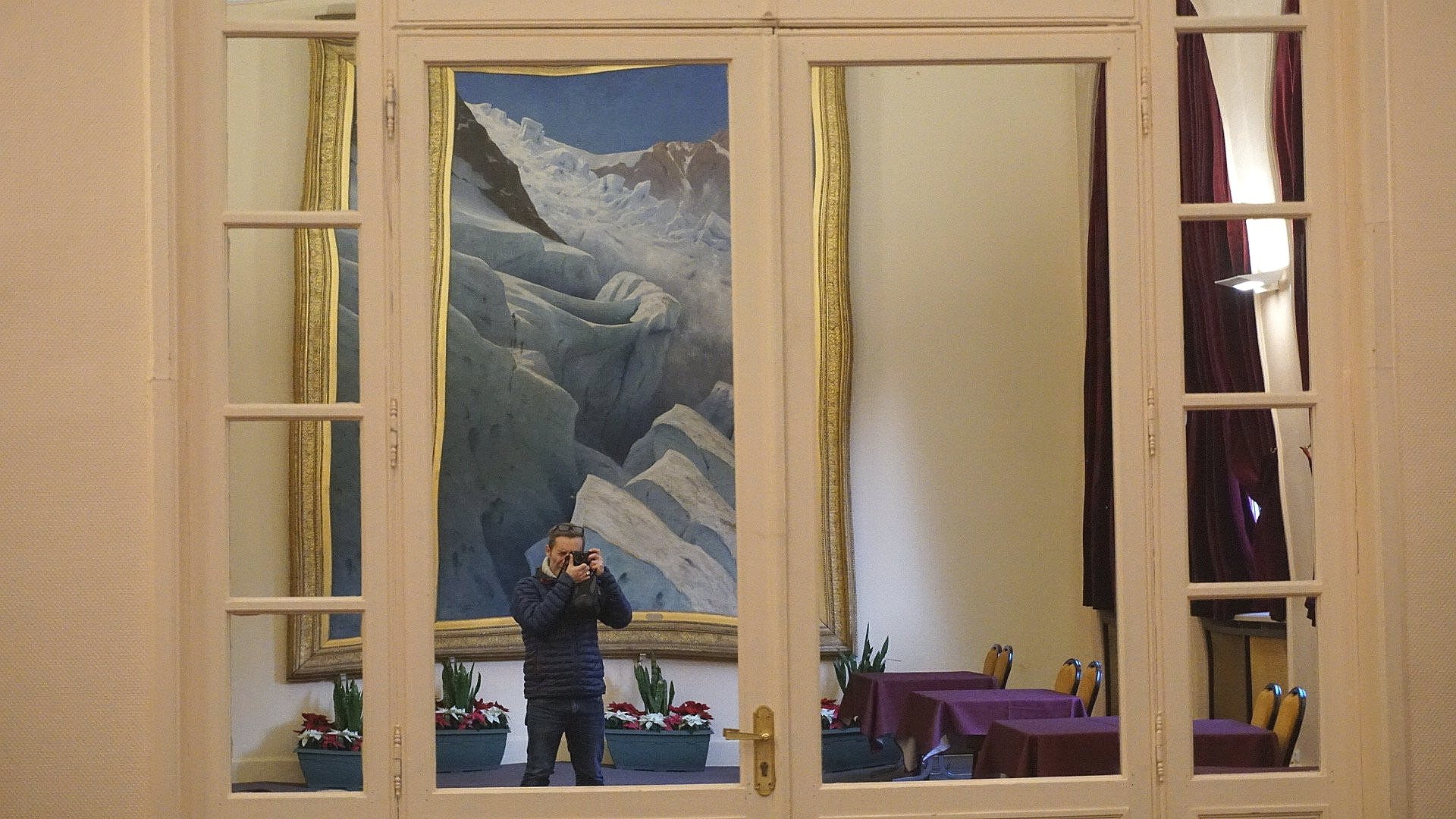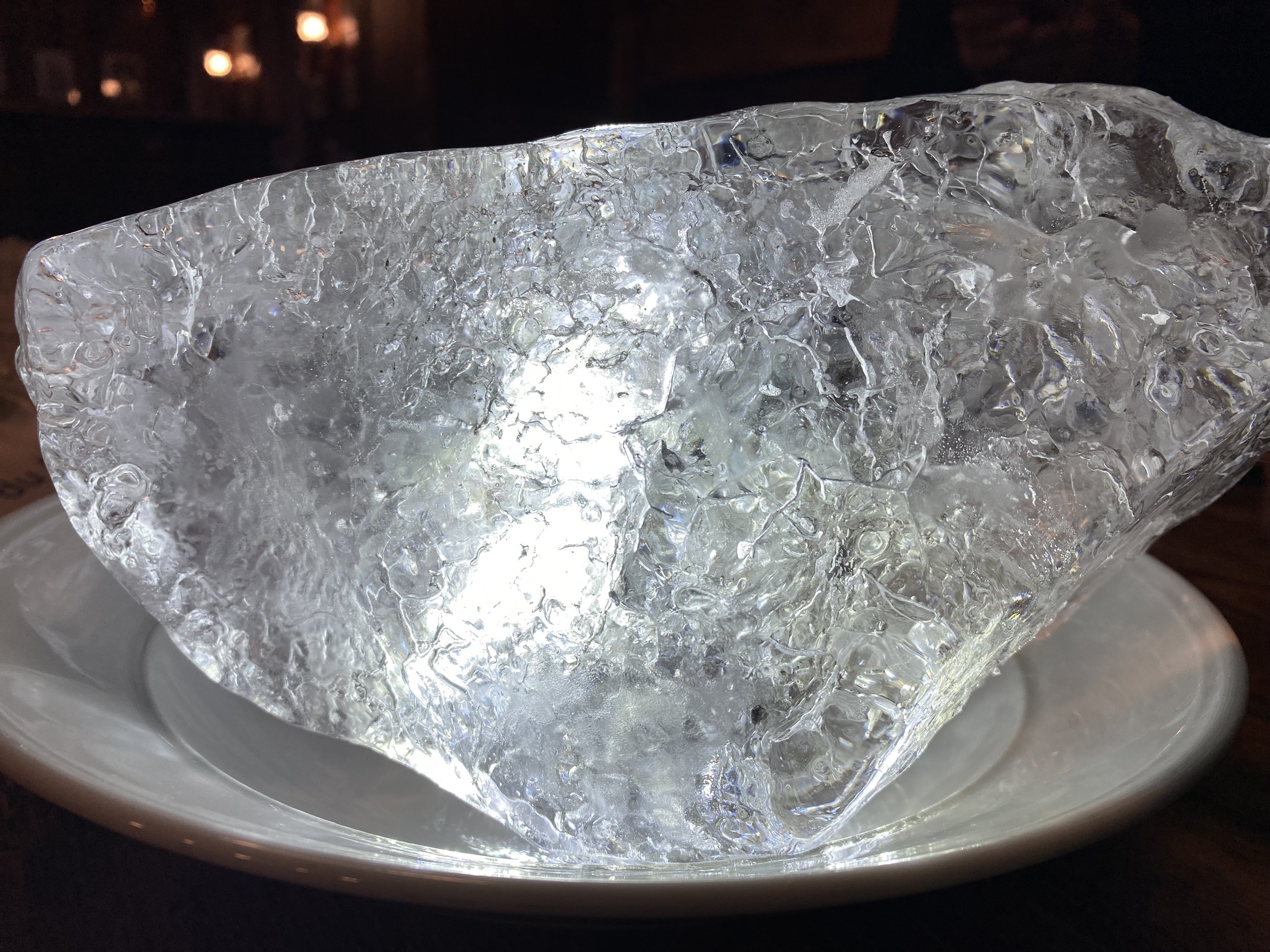A Chamonix Dalliance
The Chamonix Valley remains as intriguing a spot today, as it was for the British Alpinists of yesteryear. Yes, it has the highest mountain in western Europe, but to me that’s a mere footnote - I’ve never been drawn to the biggest, longest, highest… I leave that to the crowds. What’s always drawing me back to Chamonix is that it’s undeniably gnarly! Driving in on the elevated road that clings to the valley’s northern walls, you’re greeted by hanging glaciers that seem destined to discard hotel size chunks down to the valley floor, yet their northern aspect keeps them glued to the bare rock - well, for today at least.
I’ve been visiting Chamonix for almost thirty years: it’s an on off relationship, that’s periodically seen me turn my back on the valley and its oversubscription by adrenaline freaks, who can track out the mountain in the first hour of the lifts being opened - only to be lured back time and time again. It’s been a few years since my last flirtation with the valleys ski resorts, that spread like a disjoined web on both its southern and northern flanks. Yet on my latest trip I was surprised to find myself regretting my long absence: like an old love rekindled, I realised that I’d forgotten just what I’d been missing.
I still love pushing my own levels in the mountains, seeing where I can let myself be drawn, peeping over the edge of fear – sometimes retreating, yet other times opening the door wide to a whole world of scared. I’ve always found that in Chamonix, I’d sometimes fling that door a little too wide; possibly I always let the old charmer have her way with me, when I really know deep down, I should be slamming the door firmly shut. Maybe it’s sharing the first lifts of the day with riders from around the globe, wearing jackets seemingly made of duct tape, ladened with ropes and climbing gear strapped to the outside of their sun-bleached backpacks, that has spurred me on. But the simple fact of it is, that Chamonix has some of the world’s best lift accessed touring - and with the town being at 1040m, even the beginner skiers are riding the same morning lifts as some of the most extreme riders the valley knows. It’s a cultural mountain mashup that isn’t found in many resorts, and one that I personally love.
My latest flirtation saw me arrive in to Chamonix with January snow levels at possibly the lowest in living memory. Winters are fickle beasts however, and I can remember a season in Courchevel in the 90’s where it didn’t really snow till February: March and April turned out bomber.
But the lack of snow and the town’s green gardens gave me time to look a little deeper into the valley’s history; seek out some other things to do, and spend a little more time chilling in the Hotel Heliopics pool and spa.
The first thing I noticed when walking through the town was that the town’s clientele has changed a little; sure, the pedestrian main street has always seen big name action adventure brands rule the roost and that’s not changed, but things are going a little more up market,;voices are now a little more Eton than Essex, and the recently renovated Rose du Pont is testament to this new level of expected style. But that shouldn’t put anyone off, as it seems the increase in higher end offerings is dragging the standard of mid range restaurants, boulangeries and cafes up with it, which can only be a good thing - as long as the price point stays sensible.
One of my only regrets is not trying to buy a place here in the 90’s, as the property prices in the whole valley are now eye watering. In fact, the house prices and rental rates are having a real impact on the resort staff, who can’t really afford to live in town anymore. It’s affecting business owners too, with only a few hotels in Chamonix still run by the original owning families. One such place is the Hameau Albert Hotel, which has seen generation after generation expand to survive. Having chosen the 5 star route as the sustainable way forward, they offer fine rooms, superb food and a dessert island that will see even the most diligent forget their diet.
Yet with all the change, some things remain firmly in-place, such as the Compagnie Des Guides – founded in 1821 and located in the original 12th Century Benedictine Priory, where witches were once tried outside. On the top floor of this historic building you will find the High-Mountain Office, which is the place to head for any advice on weather, routes and general mountain guidance; there’s also a cool 3D map of the valley.
The excellent free transportation throughout the 28km long Chamonix valley is still in place too: a green initiative to stop people driving and that costs the Chamonix commune €5 million a year.
As I sup on a goldfish bowl sized - German! - gin and tonic in the Heliopic Hotel lounge, I’m told about the paintings of Gabriel Loppe; a 19th century painter, who would spend so much time sketching at altitude that his trousers would often need to be chipped free of the glacial ice. So the following day, whilst I still wait for the forecasted snow, I take a little explore of the town, and find his house built next to a little grassy bank - which is in fact a 12,000-year-old terminal moraine from the Mer de Glace. Around 20,000 years ago the grand glaciers would have rolled down the Chamonix valley all the way to Geneva, the last 1,500 years has seen them retreat 200 km.
The glaciers of Europe have always been in flux, growing and shrinking, creeping into town, covering grazing pastures and even destroying the odd house or two; locals used to think the devil lived in the ice and held both religious and pagan ceremonies to scare the ice-spirits back into the mountains. A sudden cold snap 12,000 years ago led to the terminal moraine that now acts as a kids sledging hill in the centre of town, beside Loppe’s house.
In the evening I take a train up to the Refuge du Montenvers, which originally flanked the Mer de Glace, but in the last 200 years the glacier has gone from being 1 km across to a mere 65m; it’s lost 270m of height and 3 km in length, -and if the world warms by 2.7degrees Centigrade, it’ll be completely gone by 2100. What’s even scarier is that with a 2.7 degrees Centigrade increase, they’ll be no glacial ice in Europe under 3,500 m within in a mere 80 years time; in the record breaking heat of 2022, the Tre La Tate glacier, in the Contamines valley just south of Mt Blanc, lost 4.5m of water from its surface depth( that’s 5 to 10 m of ice depth) compared to just 40cm the year before in 2021. Thats a ten-fold increase in the rate of melting.
That night, over an extremely nice meal in the recently renovated Refuge du Montenver, I chat with Luc Moreau, a local glaciologist. He tells me of his work with the glacial ice and how they take melt water from under the glacier and channel it to a man-made lake just over the Swiss border, before using this to generate enough hydro electric power to run 50,000 homes in the summer. There are only four places in the world that operate with water from under a glacier: two are in the Chamonix valley and other two are in Norway.
The glaciers are an amazing record of human impact on the environment, with analysis of recent ice showing the atomic blasts at the end of WWII, the Chernobyl disaster and even when lead was taken out of petrol.
You can’t tour easily to the Refuge du Montenver as it accessed by a cog railway, but you can (when the conditions are right) ride the Vallee Blanche, then hike the 550 steps up to a gondola, which in turn will take you up to the Refuge - which in reality is a very cool hotel, sympathetically renovated in 2019. The door of each room has a portrait of famous guests from days gone by: Byron, Lizst and Mary Shelley to name but a few. The food is fantastic, and the conversation flows over a few single malts around the fireside ,as the snow finally starts to fall.
I wake happy to a few feet of fresh snow covering the Montenver terrace - if somewhat a little frustrated, as I have to wait till 10:30 to get the train backdown to Chamonix to be able to take full advantage of it.
It’s late morning and, chomping at the bit, I clip into my board at the top of the Flegere Area. I’m soon slashing powder turns all afternoon, helped by the area’s high drag lift, TK Florias, opening late and thus allowing fresh access to the latest snowfall. I’m not really sure if it’s the seasons slow start, or the fact it’s off season mid January, but the slopes are relatively empty all day with no lift queues at all. There’s been big investment in the valley floors up lift capacity in recent years, which seems to have helped address the valley floor’s historic pinch points.
Leaving town after my latest dalliance, I may not of ridden as hard as I’d initially wanted to - I’d hoped to be able to do a Vallee Blanche descent - but the old mistress had certainly delivered. After five days in town, I’d learnt a lot about the region’s history, ridden all five ski areas, had a fantastic massage in the Heliopic spa, eaten more food than I care to remember, plus necked a cocktail or two too many: I’m sure it won’t be too long before I’m back in Chamonix’s arms again.
How Do I?
Travel
TGV Trains from Paris to Geneva Airport, from €30, is probably the easiest option, followed by a shared mini bus to Chamonix village.
Train – Rail Europe raileurope.com
Bus - alpybus.com
Bus and Car share - BlaBlaCar
Hotel
Inghams have 7 nights at the 4* Hotel Heliopic from £1388, including flights and transfers. Departs 23 March 2023.
Price includes flights (regional flights are available), transfers and half board accommodation (buffet breakfast and 3 course dinner menu at Akashon).
Can book online or call Inghams to book.
Refuge de Montenvers - can be booked as an Inghams overnight excursion (summer and winter)
















